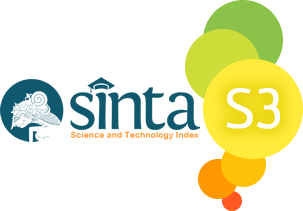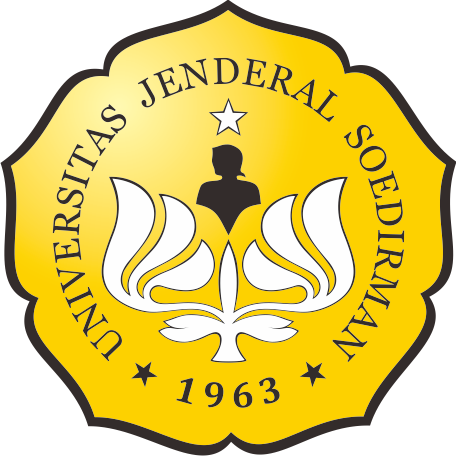KEANEKARAGAMAN MIKROALGA DITINJAU DARI FAKTOR FISIKA DAN KIMIA DI SUNGAI LOK ULO KABUPATEN KEBUMEN, JAWA TENGAH
Abstract
Microalgae diversity research in the Lok Ulo River in Kebumen Regency, Central Java was conducted in September 2018. This study aimed to determine the diversity of microalgae in the Lok Ulo river. This research was conducted by field survey method. Determination of water sampling was chosen from 3 stations based on considerations to represent waters including: Station I (upstream part of the river), station II (middle part of the river) and station III (downstream part of the river). Each of the three water samples is taken. Water samples are taken to environmental laboratories for physical, chemical and biological analysis. The results showed that microalgae species found in the upstream, middle and downstream of the Lok Ulo river numbered 9 species, namely Oscillatoria sp., Cymbellahelvetica, Cymbellatumida, Cymbellanaviculiformis, Diatomaelongatum, Fragilaria sp, Synedraaccus, Synedraaffanis, Tabellaria sp. The relationship between TDS on microalgae diversity is shown through linear equations Y = 2.404-0.00014X. Based on these equations, TDS (X) in the Lok Ulo river is able to influence the diversity of microalgae with TDS is negative, every increase of 0.1 mg / l, TDS will reduce diversity by 0.00014 microalgae. The magnitude of the effect of TDS on the diversity of microalgae is indicated by the value of the correlation coefficient (r) of 0.972 with a significance of 0.000 there is a TDS relationship with diversity. The closeness of the relationship between TDS and the diversity of microalgae is indicated by the coefficient of determination (R2) of 94.5%. This means that the magnitude of the diversity of microalgae is influenced by TDS with closeness of 94.5.
Keywords
References
Adeniyi, A. O., dan A. O. Akinwole. 2017. Phytoplankton Composition and Physico-chemical Parameters of lower River niger, Agenebode, Edo state Nigeria. International Journal of Fisheries and Aquatic Studies. Vol. 5 (3). Pp. 256-260.
Alaerts, G. A. dan S. S. Santika. 1987. Metoda Penelitian Air. Usaha Nasional, Surabaya.
American Public Health Association (APHA). 1985. Standart Methods For The Examination of Water and Waste Water. 18th-ed. AWWA (American pollution Control Federation), Washington.
APHA, AWWA, and WEF. 1992. Standart Methods For The Examination of Water and Waste Water. American Public Health Association, American Water Work Association and Water Environmental Federation Inc, New York.
Chapman, V. J. and D. J. Chapman. 1973. Ecology Freshwater The Algae 2nd Edition. The Mac Millan Press, London.
Chia, A. M., S. P. Bako, S. Alonge and A. K. 2011. Adamu, Records of Diatoms and Physicochemical Parameters of Seasonal Ponds in Zaria-Nigeria, W. Afr. J. App. Eco., 18. Pp. 9-93.
Davies, B. R., J. Biggs., P. J. Williams., J. T. Lee ., S. Thompson. 2008. A comparison of the catchment sizes of rivers, streams, ponds, ditches and lakes: Implications for protecting aquatic biodiversity in an agricultural landscape. Hydrobiologia. 597:7–17.
Davis. 1955. Freshwater Plankton. Davis: Universiry of California.
Effendi, H. 2003. Telaah Kualitas Air Bagi Pengelolaan Sumberdaya dan Lingkungan Perairan. Kanisius, Yogyakarta.
Gell, P. A., J. A. Sonneman, M. A. Reid, M. A. Ilman and A. J. Sincock. 1999. An Illustrated Key Common Diatom Genera from Southern Australia. Universitas of Adelaide, Adelaide.
Graham, L. E. dan L. W. Wilcox. 2000. Algae. Prentice-Hall, California.
Oyema, I.C. 2007.The Phytoplankton Composition, Abundance and Temporal Variation of a Polluted Estuarine Creek in Lagos, Nigeria, Turk. J. F. Aq. Sci., 7. Pp. 89-96.
Prakoso, B. 2012. Kelimpahan Chrysophyta ditinjau dari aspek nitrat, ortofosfat dan silika di perairan Waduk Panglima Besar Soedirman Kabupaten Banjarnegara. Prosiding Seminar Nasional XXI. “Peran Biologi dalam Pendayagunaan Bioresources Indonesia untuk Meningkatkan Daya Saing Bangsa”. Fakultas Biologi. Universitas Jenderal Soedirman. Purwokerto
Prescott, G.W. 1970. The Freshwater Algae University of Montana. WM.C. Brown Company Publishers. Dubuque, Lowa.
Salmin. 2005. Oksigen Terlarut (DO) dan Kebutuhan Oksigen Biologi (BOD) sebagai Salah Satu Indikator Untuk Menentukan Kualitas Perairan. Jurnal Oseana, 30. 21-26.
Simamora, Achmad., dan Inayah. 2012. Kualitas Air Sungai Bone (Gorontalo) Berdasarkan Bioindikator Makroinvertebrata. Gorontalo.
Sitorus, M. 2009. Hubungan Nilai Produktivitas Primer dengan Konsentrasi Klorofil a dan Faktor Fisik Kimia Di Perairan Dananu Toba, Balige, Sumatera Utara. Sekolah Pascasarjana. Universitas Sumatera Utara, Medan.
Soedarti, T. J. Aristiana dan A. Soegianto. 2006. Diversitas Fitoplankton pada Ekosistem Perairan Waduk Sutami, Malang. Jurusan Biologi FMIPA Universitas Airlangga-Surabaya. Berk. Penel. Hayati : 97-103.
Umar, S. 2010. Struktur Komunitas dan Kelimpahan Plankton di Danau Sembuluh Kalimantan Tengah. Seminar Nasional Biologi 2010. Pusat Penelitian Pengelolaan Perikanan dan Konservasi Sumberdaya Ikan Jakarta. Yogyakarta : Fakultas Biologi, UGM.
Werner, D. 1977. The Biology of Diatoms. Blacwall Scientific Publication Oxford, London.
Wetzel, R. G. dan G. E. Likens. 1995. Limnological Analyses. Springer, Berlin.
Widyastuti, E. 2004. Studi Korelasi Antara Nitrat dan Ortofosfat dengan Kelimpahan Fitoplankton di Tambak Udang Windu (Penaeus monodon) di Desa Ayah Kabupaten Kebumen. Skripsi (tidak dipublikasikan). Fakultas Biologi Universitas Jenderal Soedirman, Purwokerto.
Widyastuti dan Carmudi. 2012. Struktur Komunitas Mikroalga Epilitik Sebagai Biomonitoring Pengelolaan Lingkungan Perairan Sungai Polaga Kabupaten Pomalang.Makalah Konfrensi dan Seminar Nasional di Universitas Mataram.
Article Reads
Total: 629 Abstract: 629Refbacks
- There are currently no refbacks.

This work is licensed under a Creative Commons Attribution-ShareAlike 4.0 International License.
This website is maintained by:
Bio Publisher
The Faculty of Biology Publishing
Faculty of Biology
Universitas Jenderal Soedirman
Jalan dr. Suparno 63 Grendeng
Purwokerto 53122
Telephone: +62-281-625865
Email: biologi@unsoed.ac.id
T his website uses:
OJS | Open Journal System
A free journal management and publishing system that has been developed by the PKP (Public Knowledge Project) version 2.4.8.0.
All article content metadata are registered to:
Crossref
An official nonprofit Registration Agency of the International Digital Object Identifier (DOI) Foundation.
Articles in this journal are indexed by:









